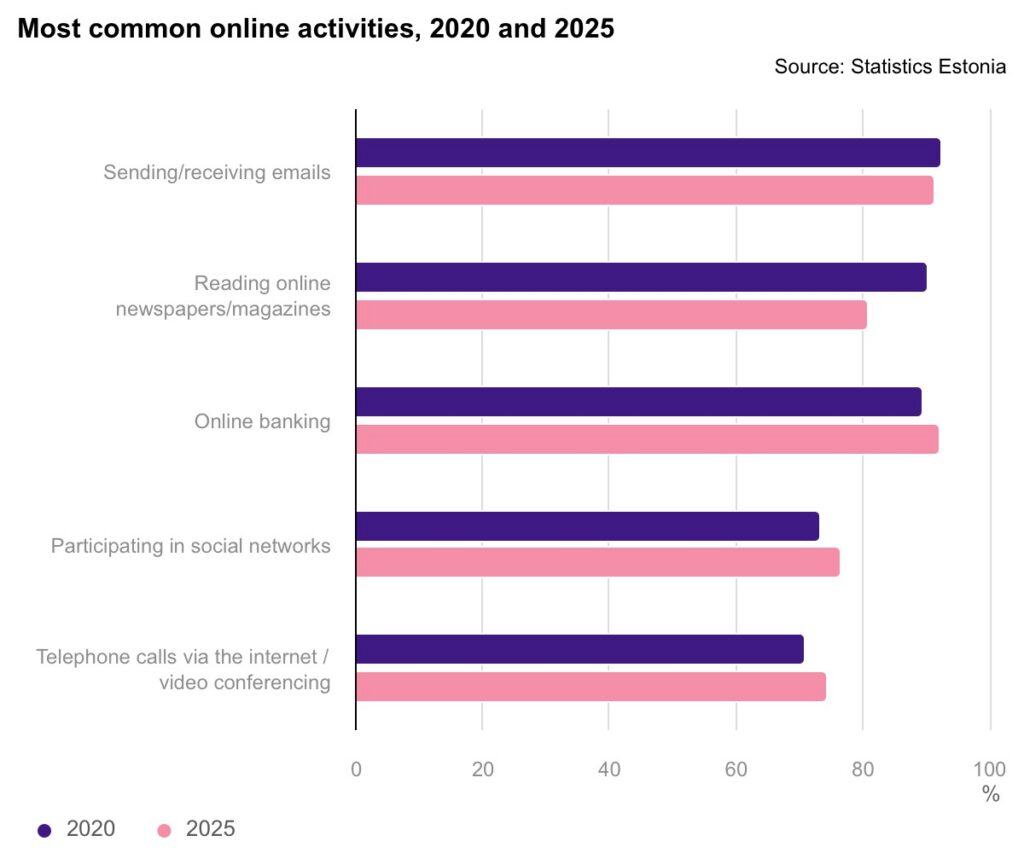According to a recent internet use and digital skills survey, 564,800 households in Estonia – 95% of all households – have an internet connection; nearly half of the internet users in Estonia have used artificial intelligence solutions to write text, search for answers to their questions or to create content.
For the first time, the 2025 survey, compiled by Statistics Estonia, the country’s official statistics agency, also collected information on the use of artificial intelligence.
“The results indicated that nearly half of the internet users in Estonia have used AI solutions to write text, search for answers to their questions or create content, for example,” the statistics agency said.
“In cities, slightly more than half of internet users also use artificial intelligence. The share in rural areas is slightly lower, but the difference is not significant.”
All in all, there are now 564,800 households in Estonia with an internet connection. Compared with 2024, the number of households with internet access has increased by 20,000.

The elderly using more internet – because statistics
Tiina Pärson, a leading analyst at Statistics Estonia, said internet use is a common practice among younger and middle-aged people (16–54-year-olds), with almost 100% of them using the internet.
Internet use has increased significantly among the elderly. For example, compared with last year, internet use has risen by five percentage points in the 55–64 age group and by six percentage points among 65–74-year-olds. Compared with 2020, the increase has been even greater, at 11 percentage points among people aged 55–64 and 20 percentage points among people aged 65–74.
“One key factor is the natural change of age groups. People who are already accustomed to using the internet are moving into older age groups, leading to greater digital competence among the elderly,” Pärson said.
In addition to reading emails and engaging in social media, people are increasingly using online banking services. According to the analyst, 92% of internet users use banking services online, with usage rates being even in both cities and rural areas.
“On the one hand, this is due to the convenient availability of the service, and on the other hand, banks themselves have increasingly directed customers to the digital environment,” Pärson said.

